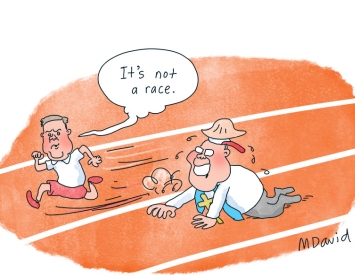It was January 1983 and raining in San Francisco. The summer before, I’d moved here from Portland, Oregon, a city known for its perpetual gray drizzles and, on the 60-odd days a year when the sun deigns to shine, dazzling displays of greenery. My girlfriend had spent a year convincing me that San Francisco had much more to offer me than Portland did for her. Every few months, I’d scrape the bottom of my bank account to travel to San Francisco and taste its charms. Once, I even hitched a ride on a private plane. (Those were the days!) In a week’s visit, she’d take me to multiple women’s music concerts — events you’d wait a year for in Portland.... Read more
Source: Rain and Heat, Fire and Snow appeared first on TomDispatch.com.




